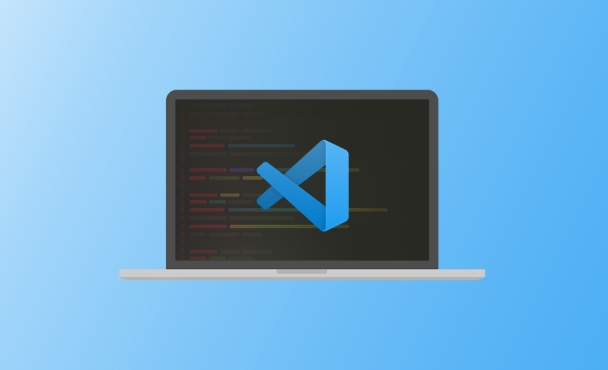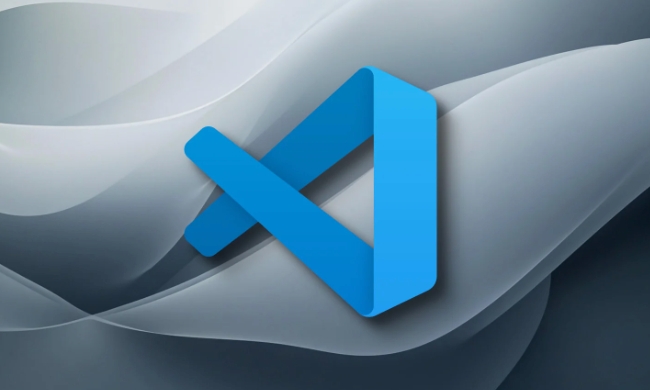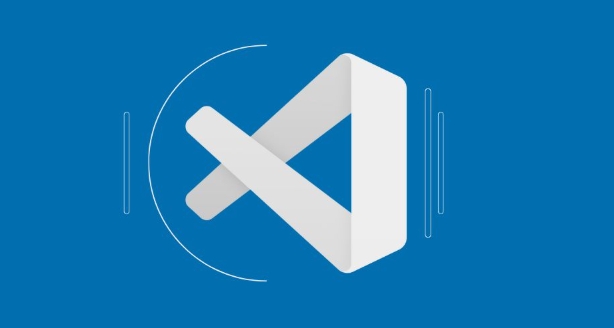The key steps in configuring a Java debugging environment on VSCode include: 1. Install JDK and verify; 2. Install Java Extension Pack and Debugger for Java plug-in; 3. Create and configure the launch.json file, specify mainClass and projectName; 4. Set up the correct project structure to ensure the source code path and compilation output are correct; 5. Use debugging techniques such as Watch, F8/F10/F11 shortcut keys and methods to deal with common problems such as class not found or JVM attachment failures.

Configuring a Java debugging environment is actually not difficult on VSCode, but it may be a bit trampled for beginners. The key is to match several core components: JDK, plug-in, launch.json file and project structure. As long as these parts are fine, debugging can run smoothly.

Install the JDK and VSCode plug-in
First of all, you have to confirm that you have installed JDK locally. It is recommended to use OpenJDK or Adoptium (formerly called AdoptOpenJDK). You can use the terminal to enter java -version and javac -version to verify whether the installation is successful.

Then open VSCode and install the following two plugins:
- Java Extension Pack : This is the basic set of Java development, including language support, project management, etc.
- Debugger for Java : This plugin is really used for debugging, and it will automatically generate some configuration files for you.
After these two plug-ins are installed, VSCode will have basic Java development and debugging capabilities.

Create launch.json configuration file
If you are debugging a Java project for the first time, VSCode may prompt you to create a launch.json file when clicking on the "Run and Debug" sidebar. If it does not automatically pop up, you can manually click "Create launch.json file" and select "Launch Current File" or "Launch Program" in Java.
The core function of this file is to specify the startup class and JVM parameters. For example, you can write this:
{
"type": "java",
"request": "launch",
"name": "Debug (Launch) - Current File",
"mainClass": "com.example.Main",
"projectName": "your-project-name"
}Note two points:
- mainClass To write the full class name, including the package name.
- If you are a multi-module project, it is best to fill in projectName as well to avoid not finding the class.
Set up the correct project structure
VSCode has certain requirements for the structure of Java projects. Generally speaking, the source code should be placed in the src/main/java directory, and there should be a .classpath file or Maven/Gradle configuration file. If you are using a normal folder instead of a Maven/Gradle project, you may need to manually set the compiled output path.
FAQ:
- Class not found: Check whether build path and output folder are correct.
- An error "Source not found" was reported at startup: It may be that the class where the breakpoint is located was not compiled or loaded correctly.
The recommended approach is:
- Initialize the project structure using Maven or Gradle.
- Make sure that the compiled
.classfile is underbinortarget/classes.
Common debugging operation skills
When debugging Java, in addition to adding breakpoints, there are some tips to improve efficiency:
- Right-click on the variable to select "Watch" to view the value changes in real time.
- Press F8 to quickly skip the current breakpoint, F10 is the stepping function, and F11 is the execution line by line.
- If the debugging is stuck, you can click the "Pause" button to see the current thread status.
Also, sometimes you will encounter "cannot attach to JVM", and you can try:
- Clean up the cache files in the .vscode directory.
- Restart VSCode and reload the Java plug-in (Ctrl Shift P enter "Reload Window").
Basically that's it. The whole process is not complicated, but it is easy to cause problems in details, especially when the path and class names are written incorrectly. As long as you take it step by step, it can usually be done.
The above is the detailed content of VSCode debugger for Java setup guide. For more information, please follow other related articles on the PHP Chinese website!

Hot AI Tools

Undress AI Tool
Undress images for free

Undresser.AI Undress
AI-powered app for creating realistic nude photos

AI Clothes Remover
Online AI tool for removing clothes from photos.

Clothoff.io
AI clothes remover

Video Face Swap
Swap faces in any video effortlessly with our completely free AI face swap tool!

Hot Article

Hot Tools

Notepad++7.3.1
Easy-to-use and free code editor

SublimeText3 Chinese version
Chinese version, very easy to use

Zend Studio 13.0.1
Powerful PHP integrated development environment

Dreamweaver CS6
Visual web development tools

SublimeText3 Mac version
God-level code editing software (SublimeText3)

Hot Topics
 What is a Singleton design pattern in Java?
Jul 09, 2025 am 01:32 AM
What is a Singleton design pattern in Java?
Jul 09, 2025 am 01:32 AM
Singleton design pattern in Java ensures that a class has only one instance and provides a global access point through private constructors and static methods, which is suitable for controlling access to shared resources. Implementation methods include: 1. Lazy loading, that is, the instance is created only when the first request is requested, which is suitable for situations where resource consumption is high and not necessarily required; 2. Thread-safe processing, ensuring that only one instance is created in a multi-threaded environment through synchronization methods or double check locking, and reducing performance impact; 3. Hungry loading, which directly initializes the instance during class loading, is suitable for lightweight objects or scenarios that can be initialized in advance; 4. Enumeration implementation, using Java enumeration to naturally support serialization, thread safety and prevent reflective attacks, is a recommended concise and reliable method. Different implementation methods can be selected according to specific needs
 How to analyze a Java heap dump?
Jul 09, 2025 am 01:25 AM
How to analyze a Java heap dump?
Jul 09, 2025 am 01:25 AM
Analyzing Java heap dumps is a key means to troubleshoot memory problems, especially for identifying memory leaks and performance bottlenecks. 1. Use EclipseMAT or VisualVM to open the .hprof file. MAT provides Histogram and DominatorTree views to display the object distribution from different angles; 2. sort in Histogram by number of instances or space occupied to find classes with abnormally large or large size, such as byte[], char[] or business classes; 3. View the reference chain through "ListObjects>withincoming/outgoingreferences" to determine whether it is accidentally held; 4. Use "Pathto
 Java Optional example
Jul 12, 2025 am 02:55 AM
Java Optional example
Jul 12, 2025 am 02:55 AM
Optional can clearly express intentions and reduce code noise for null judgments. 1. Optional.ofNullable is a common way to deal with null objects. For example, when taking values ??from maps, orElse can be used to provide default values, so that the logic is clearer and concise; 2. Use chain calls maps to achieve nested values ??to safely avoid NPE, and automatically terminate if any link is null and return the default value; 3. Filter can be used for conditional filtering, and subsequent operations will continue to be performed only if the conditions are met, otherwise it will jump directly to orElse, which is suitable for lightweight business judgment; 4. It is not recommended to overuse Optional, such as basic types or simple logic, which will increase complexity, and some scenarios will directly return to nu.
 What is a ThreadLocal in Java?
Jul 09, 2025 am 02:25 AM
What is a ThreadLocal in Java?
Jul 09, 2025 am 02:25 AM
ThreadLocal is used in Java to create thread-private variables, each thread has an independent copy to avoid concurrency problems. It stores values ??through ThreadLocalMap inside the thread. Pay attention to timely cleaning when using it to prevent memory leakage. Common uses include user session management, database connections, transaction context, and log tracking. Best practices include: 1. Call remove() to clean up after use; 2. Avoid overuse; 3. InheritableThreadLocal is required for child thread inheritance; 4. Do not store large objects. The initial value can be set through initialValue() or withInitial(), and the initialization is delayed until the first get() call.
 How to fix java.io.NotSerializableException?
Jul 12, 2025 am 03:07 AM
How to fix java.io.NotSerializableException?
Jul 12, 2025 am 03:07 AM
The core workaround for encountering java.io.NotSerializableException is to ensure that all classes that need to be serialized implement the Serializable interface and check the serialization support of nested objects. 1. Add implementsSerializable to the main class; 2. Ensure that the corresponding classes of custom fields in the class also implement Serializable; 3. Use transient to mark fields that do not need to be serialized; 4. Check the non-serialized types in collections or nested objects; 5. Check which class does not implement the interface; 6. Consider replacement design for classes that cannot be modified, such as saving key data or using serializable intermediate structures; 7. Consider modifying
 How to iterate over a Map in Java?
Jul 13, 2025 am 02:54 AM
How to iterate over a Map in Java?
Jul 13, 2025 am 02:54 AM
There are three common methods to traverse Map in Java: 1. Use entrySet to obtain keys and values at the same time, which is suitable for most scenarios; 2. Use keySet or values to traverse keys or values respectively; 3. Use Java8's forEach to simplify the code structure. entrySet returns a Set set containing all key-value pairs, and each loop gets the Map.Entry object, suitable for frequent access to keys and values; if only keys or values are required, you can call keySet() or values() respectively, or you can get the value through map.get(key) when traversing the keys; Java 8 can use forEach((key,value)->
 Python web scraping dynamic content
Jul 10, 2025 pm 12:18 PM
Python web scraping dynamic content
Jul 10, 2025 pm 12:18 PM
Dynamic web crawling can be achieved through an analysis interface or a simulated browser. 1. Use browser developer tools to view XHR/Fetch requests in the Network, find the interface that returns JSON data, and use requests to get it; 2. If the page is rendered by the front-end framework and has no independent interface, you can start the browser with Selenium and wait for the elements to be loaded and extracted; 3. In the face of the anti-crawling mechanism, headers should be added, frequency control, proxy IP should be used, and verification codes or JS rendering detection should be carried out according to the situation. Mastering these methods can effectively deal with most dynamic web crawling scenarios.
 Comparable vs Comparator in Java
Jul 13, 2025 am 02:31 AM
Comparable vs Comparator in Java
Jul 13, 2025 am 02:31 AM
In Java, Comparable is used to define default sorting rules internally, and Comparator is used to define multiple sorting logic externally. 1.Comparable is an interface implemented by the class itself. It defines the natural order by rewriting the compareTo() method. It is suitable for classes with fixed and most commonly used sorting methods, such as String or Integer. 2. Comparator is an externally defined functional interface, implemented through the compare() method, suitable for situations where multiple sorting methods are required for the same class, the class source code cannot be modified, or the sorting logic is often changed. The difference between the two is that Comparable can only define a sorting logic and needs to modify the class itself, while Compar






